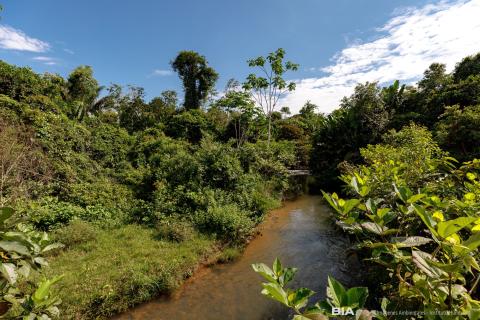Riparian forests and flooded ecosystems
Flooded ecosystems are characterized by the presence of temporary bodies of water at certain times of the year. In Colombia, they are found mainly in the flood plains of the main lowland rivers, as well as in some paramo areas. Their dynamics are influenced by precipitation patterns, which cause the connection between terrestrial and aquatic ecosystems during periods of high precipitation.
These ecosystems cover a considerable area in Colombia, estimated at 17,861,536 hectares, although they have only been detected in 7,507,650 hectares. Two main groups can be distinguished according to their dominant vegetation: savannas and flooded forests. In the Orinoquia region, the floodable savannas in the departments of Casanare and Arauca represent the largest extension of these ecosystems, although studies on them are scarce and mostly focus on biological aspects.
On the other hand, in the Amazon, flood forests occupy at least 211,403 hectares. These dense forests take advantage of seasonal flooding for fruit and seed dispersal, contributing to the consumption of aquatic species during their growth. Ecosystem services associated with flooded ecosystems include nutrient recycling and maintenance of soil fertility.
Source: Evaluación nacional de biodiversidad y servicios ecosistémicos de Colombia

